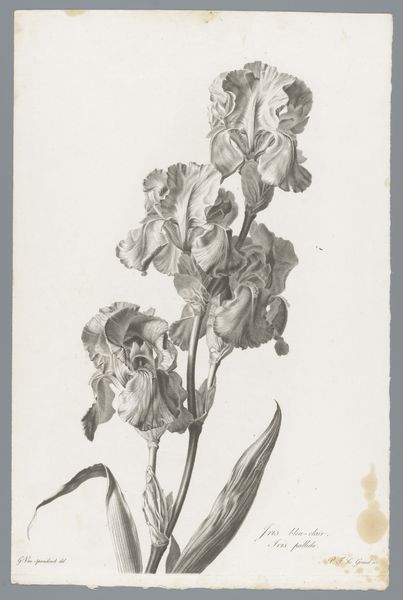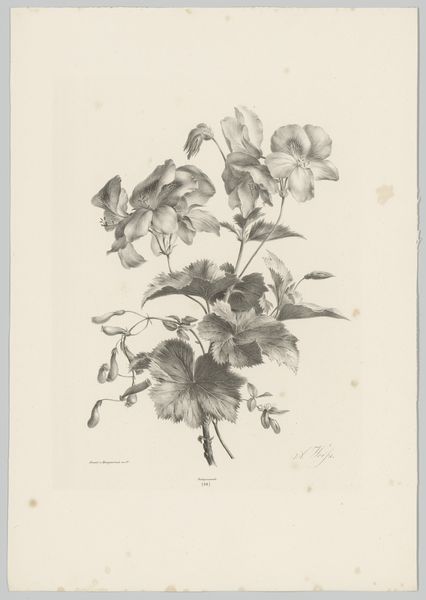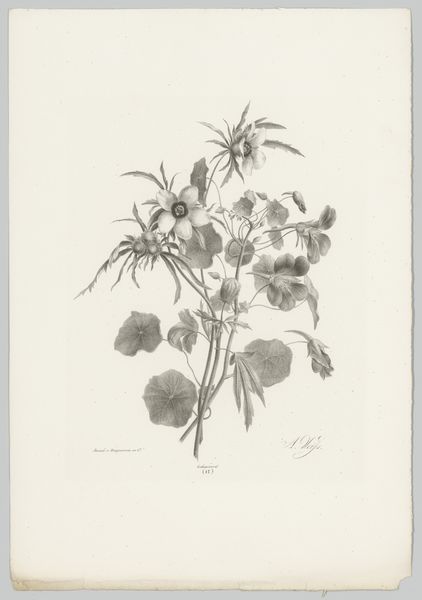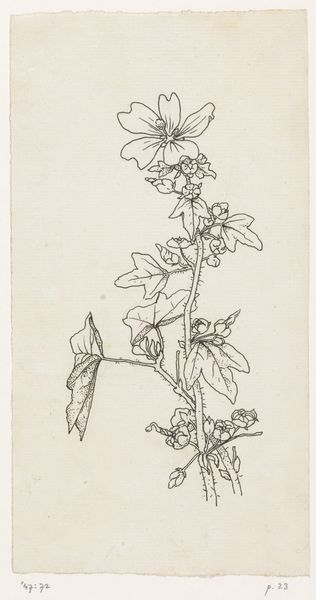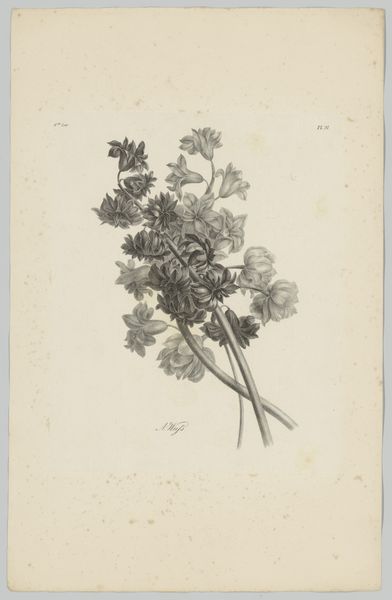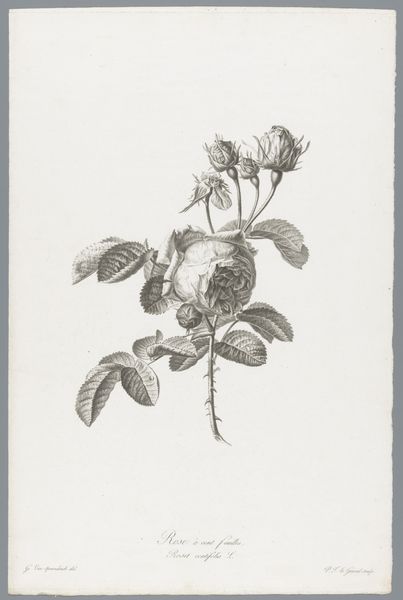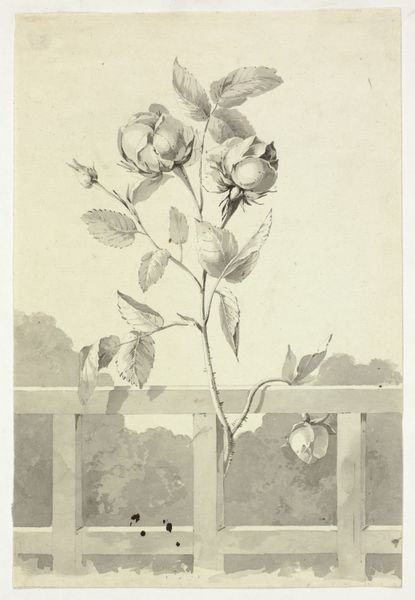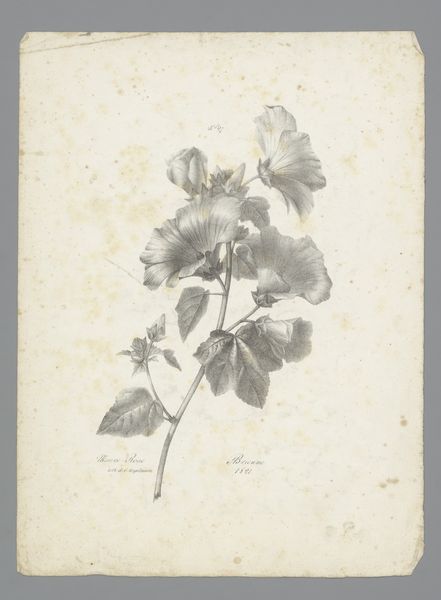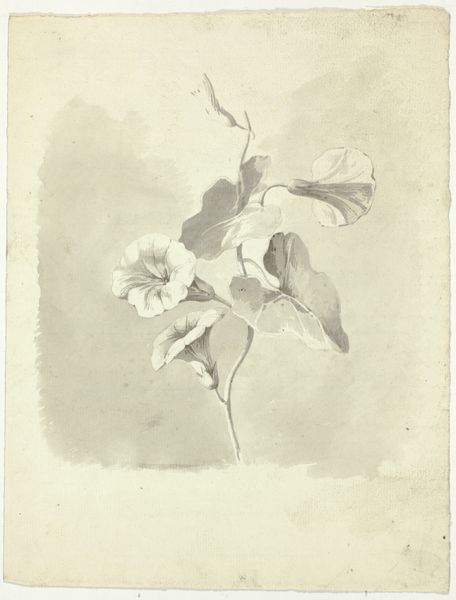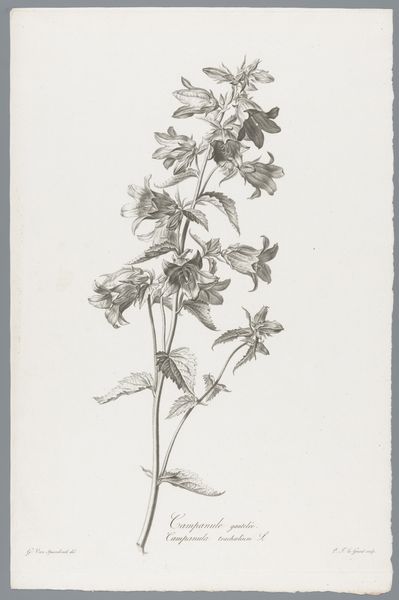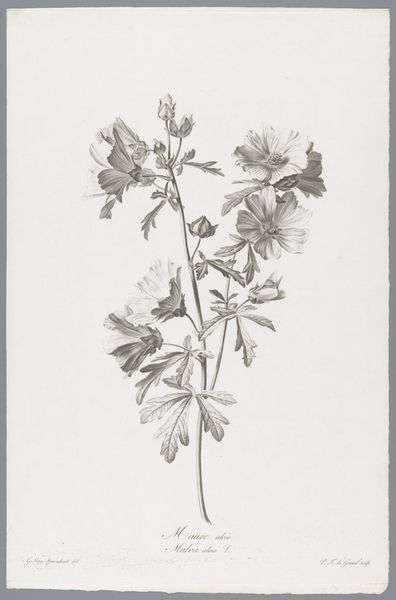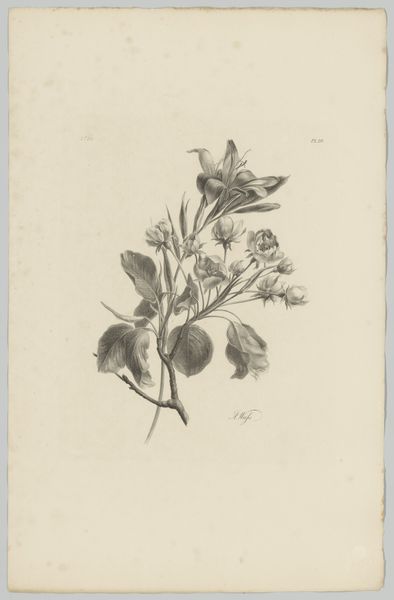
drawing, print, paper, engraving
#
drawing
# print
#
paper
#
botanical drawing
#
line
#
sketchbook drawing
#
engraving
#
botanical art
#
realism
Dimensions: height 328 mm, width 505 mm
Copyright: Rijks Museum: Open Domain
Curator: Looking at this piece, the delicate details in Alexandre Chaponnier's "Oost-Indische kers," created between 1799 and 1801, immediately catch the eye. It's currently housed here at the Rijksmuseum. What strikes you first about it? Editor: The almost ethereal quality. It's a simple study of the flower, yet there's such refinement in the rendering. The line work in the engraving suggests incredible skill. What’s intriguing is imagining the labour involved in making something so seemingly simple yet requiring precise control of tools and materials. Curator: Indeed, Chaponnier’s skill with the engraving process is clear, considering the social context during which prints, like drawings, played a crucial role in scientific documentation and dissemination of knowledge to a wide public. Botanical illustrations served not just as art but also as valuable references. Editor: Absolutely. The very process of engraving allowed for reproducibility and circulation, a way of mass-producing art and scientific knowledge. Was Chaponnier engaging in this as purely artistic endeavour, or was there also an educational, almost utilitarian, motive at play? Curator: It’s difficult to separate the two. The Rijksmuseum collection context is interesting: How do cultural institutions, such as this one, impact how the print and drawing mediums and artistic practices of the era are seen, categorised, or appreciated? What voices were included and excluded in that process? Editor: Right. Were such works intended for collectors, botanists, or both? The work existing today reflects how tastes were formed and objects valued—perhaps inadvertently, or otherwise, influencing how the consumption of the artwork plays a part in how such histories are told today. Curator: A vital point. Thinking about that impact makes me admire how, after centuries, such detailed artistic observation, rendered through material and social practices, remains capable of informing both science and artistic production and consumption in equal measure. Editor: Agreed, I initially saw only surface refinement, now I realize this speaks volumes of social history, materials, and method, highlighting the labor required for a final product which may obscure it. Thank you for helping me think about this.
Comments
No comments
Be the first to comment and join the conversation on the ultimate creative platform.
